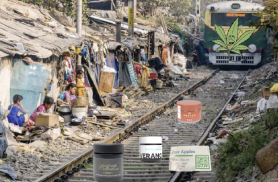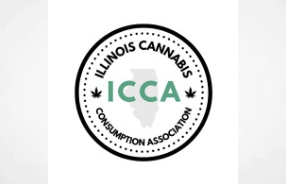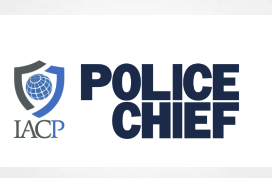Editor’s note: This article was originally published in Let’s Talk Hemp. It is reprinted here with permission. Thanks to Morris Beegle and the Let’s Talk Hemp staff.
A recent spate of articles in Hemp Today, an industry media outlet focusing on fiber, grain, and other industrial uses for cannabis, decries the popularity of intoxicating cannabinoid products. While one article admits, “there’s nothing inherently wrong with delta-8 THC” when properly formulated, the author recommends that D8 and other intoxicating hemp products be taken away from the hemp industry and sold solely through federally illegal state marijuana distribution channels. This article addresses the misguided view that intoxicating hemp cannabinoids are not properly part of the “hemp” industry, which is itself an artificially created category of the cannabis plant. I will also discuss how a certain sector of the hemp industry, a sector prominently represented by Hemp Today, is blind to the incredible revolution and reform occurring within the broader cannabis industry. This blindness includes a failure to recognize that the revolution is largely led by the cannabinoid hemp sector itself, with current revenues of $28 billion and growing.
Hemp Today claims cannabinoid hemp products are dangerous for two reasons. First, it claims these products are dangerous to public health. (“Dodgy producers continue to market delta-8 and other intoxicating cannabinoids to children, packaging edible products in brightly colored motifs that mimic popular brands of candies and other treats.”) Cannabinoid hemp products are not a danger to public health. From the standpoint of mortality, more people die from water toxicity (i.e., drinking too much water) each year than they do from consuming intoxicating hemp cannabinoids. Even if we accept that the tragic death of a Virginia child who reportedly consumed his mother’s D8 product is accurate, a conclusion that some medical professionals question, then this means only one person has ever died from consuming an intoxicating hemp cannabinoid product. A recent study, conducted by scientists who are mostly employed by large pharmaceutical companies, found that during the 30 months immediately following passage of the 2018 Farm Bill 168 reports of adverse events in which delta-8 THC was a “suspect drug” were reported to the FDA Adverse Event Reporting System (FAERS). The reported events were “mostly respiratory in nature” and, along with “vomiting” (14), “chest pain” (14), and “seizure” (16), included mild events such as “cough” (15), “nausea” (14), “feeling abnormal” (13), “dizziness” (12), and “anxiety” (10). Many of the reported adverse events were suspected “drug interactions” (23). Ideally, there would be no adverse events in which D8 was a “suspect drug”. However, 168 adverse events over 30 months is significantly less than the roughly 512 adverse events reported to FAERS for caffeine consumption during the same period. (Note that the FAERS chart I viewed provided adverse events by year, so I halved the number for 2021 and added it to the number for 2019 and 2020.) The point is, while there have been reported adverse events related to D8 consumption, the hysteria surrounding them is totally overblown.
As I stated above, Hemp Today admits that D8 is not dangerous. Rather, it claims that a lack of regulation results in dangerous D8 and other intoxicating products in the market. However, as I’ve previously discussed, the cannabinoid sector of the hemp industry is highly regulated. Moreover, it actively lobbies for appropriate uniform regulations, as no manufacturer wants to be subject to 50 different labeling requirements. As with all industries, bad actors exist in the hemp industry. The legitimate cannabinoid hemp industry supports federal and state-level bills that promote appropriate public safety issues, like quality manufacturing, proper labeling, and age-gating. Fortunately, most hemp industry participants “get it” and a group of 33 non-profit hemp organizations recently came together to promote sensible hemp regulations.
Second, Hemp Today claims cannabinoid hemp products have set back decades of lobbying to distinguish “hemp” from “marijuana”, resulting in negative investment and development in hemp. (“With “intoxicating” hemp products more exposed to the public (and regulators), any results of those efforts are quickly being eroded, negatively affecting investment and development across all hemp sectors.”) Cannabinoid hemp products have not set back decades of lobbying by the hemp industry to distinguish “hemp” from “marijuana”. Instead, they have helped in the continued expansion and normalization of hemp. The time old-school “Hempsters” spent in the 1980s, 1990s, and 2000s convincing lawmakers that the cannabis plant is actually two separate plants, namely “hemp” and “marijuana”, was necessary from a historical standpoint. During that time, cannabis was under a well-funded attack by prohibitionist drug warriors. Sectioning off and defining a portion of the plant’s commercial utility as “industrial hemp” was a brilliant strategy. It successfully began a long process of destigmatizing and normalizing the cannabis plant to a world that was subject to lies about it for most of the 20th century. Starting with hemp seeds and fiber, and through much lobbying and many lawsuits, cannabis in the form of “industrial hemp” was slowly but steadily legalized and made available to the general public. To date, the crowning event in this progression was passage of the 2018 Farm Bill, which dropped the “industrial” prefix of the name and broadly defined “hemp” as “the plant cannabis sativa l” and “any part of that plant, including the seeds thereof and all derivatives, extracts, cannabinoids, isomers, acids, salts, and salts of isomers, whether growing or not, with a delta-9 THC concentration of not more than 0.3 percent on a dry weight basis.” (emphasis added) This definition goes beyond grains, fiber, or biomass to encompass the entire plant, including the unique compounds it produces called “cannabinoids”, provided the concentration of delta-9 THC does not exceed 0.3% by dry weight. As the DEA has said on numerous occasions, the sole metric to distinguish between illegal “marijuana” and lawful “hemp” is the concentration of D9. By expanding the legal definition of hemp to expressly include its cannabinoids, derivatives, etc., the 2018 Farm Bill accelerated progress in the long struggle for cannabis reform. In the five years since passage of the 2018 Farm Bill, the public’s exposure to and access to cannabinoids through the “hemp” channel helped to normalize them. It has also helped to destigmatize the plant that produces them. An unfounded fear that cannabinoid hemp products will somehow undo the progress that has been made is misguided. To say that it “negatively affect[s] investment and development across all hemp sectors” is incorrect. The opposite appears to be true, as the cannabinoid hemp sector of the hemp industry has grown to the size of the craft beer industry in a mere 5 years. Cannabinoid hemp is currently leading the way to total re-integration and liberation of the cannabis plant.
In addition to ignoring the plain language of the law, Hemp Today’s discontent with hemp’s “derivatives, extracts, cannabinoids, isomers, acids, salts, and salts of isomers” belies a fundamental misunderstanding of how an agricultural economy works. Farmers rely on end users for their crops. Some of these end users consume the “whole foods” themselves, like corn, potatoes, broccoli, etc. However, the end users of many crops, including barley, corn, and potatoes, consume something akin to their derivatives, namely alcohol. Similarly, sugar derived from corn is widely used in processed food and ubiquitously available to billions of consumers. Although this has resulted in an epidemic of serious, and often fatal, health problems, it is accepted as normal. My point is that the end users that hemp farmers rely on often consume a derivative of their hemp crops, rather than the unprocessed agricultural product. This is both completely normal and necessary for a fully functioning hemp economy.
As an aside regarding delta-8 THC and other so-called “synthetic” cannabinoids derived from hemp, some of the most important and most significantly under-regulated products consumed in the US use completely synthetic versions of naturally occurring compounds. For instance, the caffeine most of us consume is not extracted from coffee beans or tea leaves. Rather, it is the product of a synthesized process that starts with ammonia. As little as two tablespoons of synthetic caffeine is lethal, and most of the world’s supply is produced using harsh solvents by manufacturers in China. Despite producing a highly addictive, toxic, and psychoactive product, the synthetic caffeine industry is subject to very little regulation or scrutiny in the US. Yet, products containing synthetic caffeine are marketed and distributed throughout the country, including in convenience stores. Many products containing synthetic caffeine directly target children. (Does this sound familiar?) If you drank a soda, energy drink, or used a workout supplement today, the odds are high that you consumed synthetic caffeine. But the billion-dollar synthetic caffeine industry is not being taken to task. Rather, it is the manufacturers and distributors of hemp-derived cannabinoid products such as D8 who are being singled out by media outlets and lobbyists as “irresponsible”. This is backward.
Finally, I cannot help but point out that Hemp Today’s attempts to disavow hemp cannabinoid products and cast them as somehow estranged from, or hostile to, hemp’s “industrial” uses, fail its own stated Mission, which is “the use of the versatile hemp plant in everything from medicine and food to cosmetics, building materials and automotive parts.” (emphasis added) I sincerely hope Hemp Today, and adherents to the views expressed in several of its recent articles, will open their eyes and understand that the entire hemp industry, from cannabinoids to grain to fiber, is collectively forging a bold and broad path to cannabis reform. Hemp is cannabis. Maligning the cannabinoid hemp sector while playing it against the marijuana sector serves no purpose except to undermine the cause of cannabis itself, including the many beneficial products it produces.
January 9, 2024

Rod Kightis an international cannabis lawyer. He represents businesses throughout the cannabis industry. Additionally, Rod speaks at cannabis conferences, drafts and presents legislation to foreign governments, is regularly quoted on cannabis matters in the media, and is the editor of the Kight on Cannabis legal blog, which discusses legal issues affecting the cannabis industry. You can contact him by clicking here.
https://cannabusiness.law/hemp-today-stuck-in-the-past-on-cannabinoid-hemp/


















